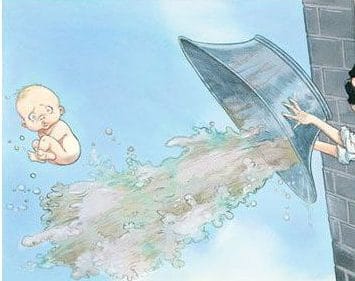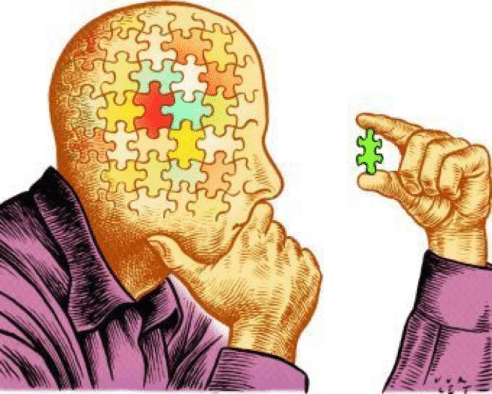I come from a background of manual therapy – my father before me weaned on the teachings of James Cyriax, as did I. My mentors, whom I have had the privilege to be trained by, in addition to James include Alan Stoddard, Gregory P Grieve, Brian C Edwards, Robin A McKenzie and Geoff Maitland to name but a few greats. I’m not blowing my own trumpet but I want to get across that it was no mean feat to convert me, back in 1994 to the thinking and knowledge being developed and spread by Neuro Orthopaedic Institute, then in its infancy.
Evolving times
We were all on a roll in the 80s having absorbed the quantum leap that Geoff Maitland and his superb clinical reasoning had given us. With this leap came a vast improvement in the results that we achieved in the historic pain sector. This was probably brought about by the improved clinical reasoning rather than the manual skills themselves, skills that have been around for centuries.
But we all still had those patients who didn’t get better – a further evolution was required in our therapy. The likes of David Butler (with some hair then) Louis Gifford (God rest his soul) Michael Shacklock (the quiet one) and the emerging Mick Thacker (still a young whippersnapper then) were responsible for my transition.
Now, on top of advanced clinical reasoning we had approaches that considered other bodily tissues – nerves came alive and became more than dumb conductors of messages to the brain; the brain itself came into play and education started to be more than a pamphlet handed to a patient on their way out; our thinking about pain deepened and took on ideas from evolutionary biology – with the whole organism considered; and the beginnings of the neuroimmune revolution were getting underway.
For those that seek it, we now have more knowledge about people and their bodies, brains, nervous and other systems than ever before. Treatment approaches have continued to evolve to include the methods of delivering this information to people in pain in a therapeutic manner. Deeply listening to patients seems to be (back?) in vogue, although for those of us lucky to learn from some of the pioneers in this game, we could say, humbly, that we noted from the very beginning that they were each much more than their techniques – they were exquisite listeners first, and powerful communicators second. And yet, there remains that group of patients who ‘stubbornly refuse’ to improve.
A Case History
Mrs Delight age 54 presented recently with a history of recurrent cervical events dating back to 1988. In the last 3 years, the situation evolved into constant life distressing variable pain radiating into the upper anterior chest and down the right arm to the wrist. I will not bore you with the full story other than to say Mrs delight bought in totally to the Explain Pain story, was using the laterality program regularly and the Protectometer was going down well.
All this combined with neural mobilisation and a manual package directed at the boggy, stiff, leather-feeling (palpation interpretations of a ‘Geoffy’) and painful to the touch, spinal segments on the right between C5 & T4.
The result after several weeks was one of little change.
Don’t throw the baby out with the bathwater

What was I missing? The neural mobilisation was now ‘clean’ and the patient was doing her ‘homework’? Maybe the other ‘issues in the tissues’ weren’t getting enough attention. Only when I stepped up the manual side directed at the palpation findings as I would have done in the 80s, combined still with the NOI package, did we see a breakthrough and an important improvement in her symptoms. This whilst her DIM count was high as her father who suffers dementia has just had a stroke.
Evolutionarily conserved
In genetics speak, a gene or portion of a gene can be ‘evolutionarily conserved’ – this simply means that it is evident across a time span of evolution, and across different species. It points to both a common origin of the species and, most importantly, the vital and essential functional role of that gene. Changes in genes that are evolutionarily conserved are likely to be fatal to the species.
Touch, movement and manipulation of bodily tissues might be considered evolutionarily conserved traits in the many different species of manual therapies that now exist. These species certainly all share a common origin in millennia past and some have died out along the way – perhaps they messed with the trait too much? Despite the mapping of the human genome, we’re still some way off unlocking all the secrets of genetics. Similarly, we’re not always confident about how or why manual ministrations work, but their conservation might suggest that they still have an essential role; at the right time and place – remember that the evolution of treatment approaches also gave us clinical reasoning.

So let’s not forget those issues in the tissues. It isn’t a crime to use your basic manual and rehabilitative skills along with your new learnings and experiences.
Put another piece into the puzzle of your acquired knowledge and skills over the years. Don’t replace one puzzle with another, let the image form.
That’s what we call evolving clinical maturity.
-David Bolton
THE 2017 NOI CALENDAR IS SHAPING UP, HERE ARE THE CONFIRMED DATES FOR NOW
Melbourne 31 March – 2 April EP and GMI
Adelaide 26-28 May EP and GMI
Darwin 4 – 6 August EP and GMI
Brisbane 25 – 27 August EP and GMI
Don’t worry NSW, we’re very close to confirming dates and locations to bring you some love too.
Check out our courses page for details and to enquire
HAVE YOU DOWNLOADED OUR NEW PROTECTOMETER APP YET?

Just search the App Store from your iPad for ‘Protectometer’


David, we are of the same vintage. By way of suggestion, would you consider adding the names of Bob Elvey and Max Zusman to the pantheon? Both influenced my career at a time when the views of Geoff Maitland held sway in the profession. In fact, I was working in the Physical Medicine Department at the London Hospital when Geoff paid a visit to introduce his concepts and techniques of treatment.
Hi John
I thought that both of these were fitting here, in case some of the readers were not familiar with your very apt additions
https://noijam.com/2013/07/16/bob-and-neural-tissue/
https://noijam.com/2014/03/20/max-zusman/
Best
Tim
Absolutely, particularly Bob who was a lovely shy man as I remember him, uncomfortable in front of an audience but a great pioneer. He always used to say about himself ” What you see is what you get”
I, like David, have been around for longer than I would like to admit. I have forgotten (good riddance) probably much more than I now know and had to work to unlearn (hard work getting those neural pathways to change) probably even more. I too had the distinct privilege of knowing and working with some great clinical thinkers and clinical teachers of the past 4-5 decades (ouch-that is painful). I agree with David that even in this new world that focuses on neural connections and adaptations, there is much that I hold dear from those days and I continue to believe that many of old manually based evaluative/ reasoning and even treatment skills are still valuable.
Some musings of another old PT:
Manual techniques and specific exercise concepts work not because they produce a change it musculoskeletal tissue but that they affect neural tissue modulating sensory processing and allow patients to believe that they can be better. As a result, they lose their fear of movement and then nature does it work. I long ago gave up the idea that I “clicked” something back in place.
Clinical evaluation and reasoning skills are critical to allowing me to answer Lorimer’s great question: “How dangerous is this really?” I need to answer that question to a significant degree of certainty for myself before I could ever begin to successfully convince the patient that “nothing dangerous is occurring here”.
The clinical wizards that you mentioned not only had good hands, they were also phenomenal communicators who were able communicate with patients on levels that I envied and tried to emulate. In hindsight, that ability to communicate might have been the most powerful skill that they taught me.
Whatever skill level I attained, I worked damned hard to get there. As my practice changed during the last decade, I realized that I had to work even harder to produce the conceptual change needed to grasp this neural plasticity thing, to change old language patterns and entrenched behaviors, and finally let go of some deeply held beliefs. In many ways, learning the manual skills was much easier than becoming proficient in the skills that I needed for this new world.
David, I have decided to spend much more time fly-fishing. Where does your future lead you? JohnB
Hi John, I agree with you on the modulation issues concerning manual techniques however I do believe that joints are allowed to be stiff and tissues “boggy”. Reversing that with good old fashioned ” Hands on” has to influence how the brain ways up the world. Maybe a small player but maybe a big perpetuater?
It was from those guys that I learnt to listen, a vital clinical skill.
I’m not a fisherman but I am learning to take time off having entered into my 46th clinical frontline position. I’m going for the big fifty 🙂
Good for you. I’m looking for that big salmon.
Hi David,
Great title and content. I’m interested to know a little more detail on the changes on the techniques you utilised with Mrs Delight. Also, what your retrospective thoughts are on the relative contributions of central, peripheral and nociceptive mechanisms in the case?
I noticed NOI are soon running a course on predictive processing and pain in London, so assume terms like the Bayesian brain, free energy, generative models and predictive processing are soon going to be in vogue.
Relating this to your post, utilising response to manual therapy to aid the diagnostic /rehabilitative process IFritz & Wainer 2001), similar to utilising pattern recognition in clinical diagnosis, are potentially aspects of a predictive processing model in physiotherapy practice (Seth 2014; Doody & McAteer 2002)?
Max
Doody C, McAteer M. Clinical reasoning of expert and novice physiotherapists in an orthopaedic outpatient setting. Physiotherapy. 2002; 88: 258-268
Fritz & Wainer.2001. Examining diagnostic tests: An evidence based perspective. Physical Therapy. 2001; 81: 1546-1564.
Seth A. A predictive processing theory of sensorimotor contingencies: Explaining the puzzle of perceptual presence and its absence in synaesthesia. Cognitive Neuroscience. 2014; 5: 97-118.
Hi Max, And thank you for your comments. In answer to your first question it isn’t about which technique to use, any tool that fits will do if the clinical reasoning is right.
As to the second point of which players are more important the final experience is a team effort and all members deserve equal attention.
On the third point I know too little to comment…